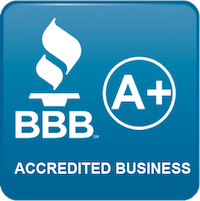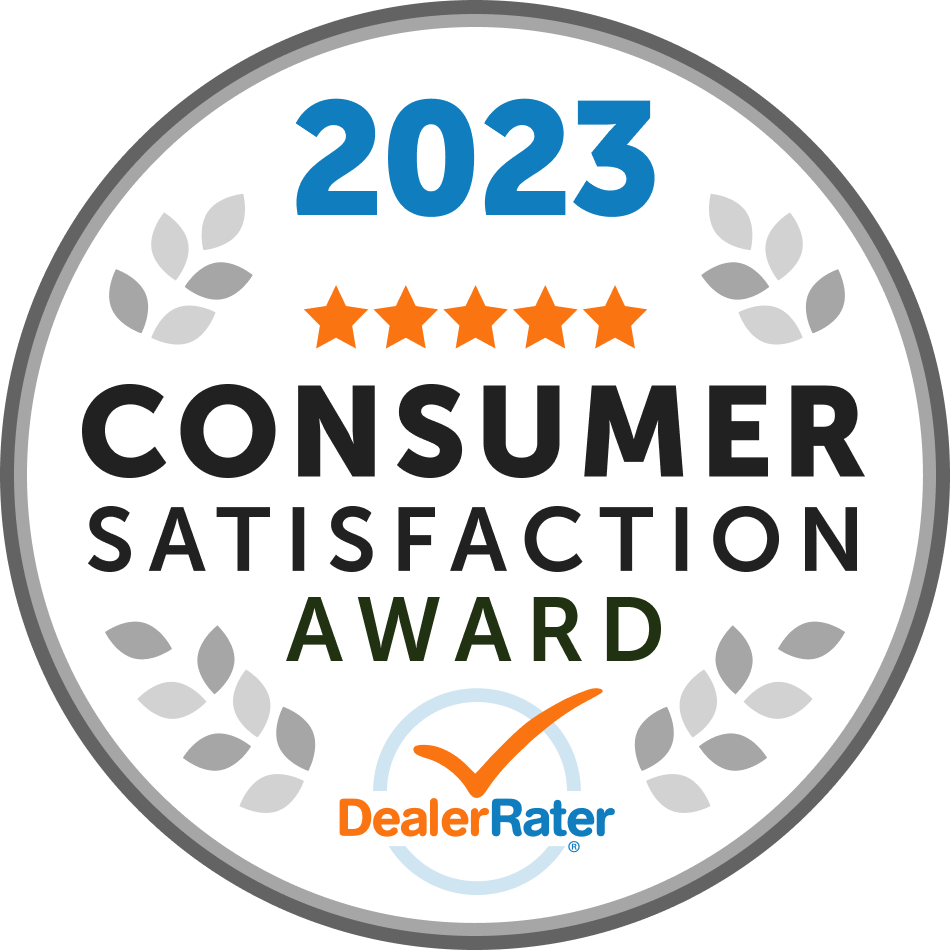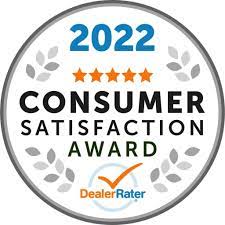In Texas, a truck is more than just a vehicle—it's a tool for work, a way to haul gear for a weekend at the lake, and a dependable ride for your family. When you need one, you need one now. But what happens when your credit score doesn't reflect your ability to make payments today? It can feel like a major roadblock. The good news is that your credit history doesn't have to stop you from getting the truck you need. The process of securing pickup truck financing bad credit is more straightforward than you might think. This guide is designed to walk you through the practical steps, from preparing your application to finding a lender who understands your situation right here in the Dallas-Fort Worth area. 
Key Takeaways
- Get Your Financial Ducks in a Row First: Walk into the financing process with confidence by preparing ahead of time. Gathering your key documents, saving for a solid down payment, and getting pre-approved strengthens your application and gives you a clear, realistic budget.
- Compare Offers Based on Total Cost, Not Just the Monthly Payment: A low monthly payment can hide a much more expensive loan. Always focus on the APR, which includes fees, and calculate the total cost over the entire loan term to find the deal that truly saves you money.
- Use This Loan to Build a Stronger Financial Future: Treat your truck loan as a powerful tool for rebuilding your credit. Every on-time payment helps improve your score, opening the door to better interest rates and financing opportunities down the road.
What Is Bad Credit (and How Does It Affect Truck Financing)?
Let's be real: hearing the words "bad credit" can be stressful, especially when you need a reliable truck to get around the DFW area. But a low credit score doesn't automatically mean you're out of the running for a great pre-owned pickup. It just means you need to approach financing with a bit more strategy. Understanding what a "bad" score is and how lenders view it is the first step to getting behind the wheel of the truck you need.
Think of your credit score as a quick snapshot of your financial history. Lenders use it to gauge the risk of lending you money. While a lower score can lead to some challenges, like higher interest rates, it’s not an impossible hurdle. Many lenders, including our team here at Auto Web Expo, specialize in helping drivers with less-than-perfect credit find workable financing solutions. It’s all about knowing where you stand and what to expect.
What Qualifies as Bad Credit?
So, what number are we actually talking about? Generally, most lenders consider a FICO score of 580 or less to be in the "bad credit" or "subprime" category. If your score falls in this range, lenders see you as a higher-risk borrower. This doesn't mean they'll say no, but they will be more cautious. It’s important to remember that this is just a guideline. Different banks and credit unions have their own criteria, and some may be more flexible than others. The best way to know for sure is to check your score before you start shopping.
How Your Score Impacts Rates and Terms
Your credit score has a direct impact on the kind of loan you can get. While you can still secure financing for a truck, you'll likely face higher interest rates and less favorable terms than someone with excellent credit. For example, a bad credit auto loan might come with an interest rate of 14% or higher and a longer repayment period, like 72 months. A longer term can lower your monthly payment, but it also means you'll pay significantly more in interest over the life of the loan. Using a car loan calculator can help you see how different rates and terms will affect your total cost.
Common Credit Score Myths, Debunked
It’s easy to think your credit score is the only thing that matters, but that’s a common myth. Lenders look at your entire financial profile, not just one number. They’ll consider your income, your employment history, and the size of your down payment. A steady job and a decent down payment can show a lender you’re a reliable borrower, even if your score is low. Another myth is that all lenders are the same. The truth is, some banks are more willing to work with buyers who have lower credit scores. Don't get discouraged by one rejection; the right financing partner is out there.
Where to Find Financing Options
Even with a challenging credit history, you have more financing options than you might think. The key is knowing where to look and understanding how each one works. From traditional banks to specialized dealership financing, let's explore the paths you can take to get behind the wheel of your next truck. Finding the right lender is the first step toward rebuilding your credit and driving away in a vehicle you love.
Traditional Lenders
Traditional truck loans are what most people think of first. These are typically offered by banks and other financial institutions. The loan is almost always a secured loan, meaning the truck itself serves as collateral. This reduces the lender's risk, but it also means they can repossess the vehicle if you miss payments. For buyers with bad credit, a down payment is usually required. While it might feel like a hurdle, putting money down shows the lender you're serious and can lower your monthly payments, making the loan more manageable in the long run.
Banks and Credit Unions
If you have an established relationship with a local bank or credit union in the DFW area, it’s worth starting there. They can sometimes offer more favorable interest rates to existing customers, even those with imperfect credit. The process might take a bit longer than at a dealership, but the potential savings could be worth the wait. Credit unions, in particular, are non-profits and are often known for their member-friendly terms. The main trade-off is convenience; while a dealership can often get you financed and driving off the lot the same day, a bank may require a more formal application process.
In-House Financing (Buy Here Pay Here)
Dealerships with in-house financing, sometimes called "Buy Here Pay Here," can be a fantastic resource when your credit is a concern. Instead of sending your application to outside banks, the dealership handles the financing directly. This gives us more flexibility to work with your unique situation. At Auto Web Expo, our finance department specializes in helping DFW drivers secure loans for the quality pre-owned trucks they need. We understand the local market and are committed to finding a solution that fits your budget, allowing you to rebuild your credit while driving a reliable vehicle.
Online Lenders
The internet has opened up a world of financing possibilities. Online lenders specialize in auto loans and can be a quick and efficient way to see what you qualify for. Many platforms allow you to fill out one simple application and receive personalized loan offers from multiple lenders in minutes. This makes it easy to compare rates and terms from the comfort of your home. For truck buyers with bad credit, these platforms can connect you with lenders who specifically work with your credit profile, increasing your chances of approval.
The Role of a Cosigner
If you're struggling to get approved on your own, bringing in a cosigner can make all the difference. A cosigner is someone with good credit—usually a trusted family member or friend—who agrees to share responsibility for the loan. Their strong credit history provides the lender with extra security, which can significantly improve your chances of approval and help you lock in a lower interest rate. It’s a big commitment for the cosigner, as they are legally obligated to make payments if you can't. However, if you have someone willing to help, it’s one of the most effective ways to secure a better loan when you're rebuilding your credit.
How to Prepare Your Loan Application
Walking into a dealership ready to apply for a loan can feel intimidating, especially if you’re worried about your credit. But a little preparation goes a long way and puts you in the driver's seat—literally. Getting your finances in order before you start shopping shows lenders you’re a responsible borrower and helps you secure the best possible terms for your situation. Think of it as creating a financial game plan. By gathering your documents, understanding your credit, and knowing your budget, you can approach the financing process with confidence and clarity. Let’s walk through the simple, actionable steps you can take to prepare your application.
Gather Your Key Documents
Before you even start an application, get your paperwork in order. Lenders will need to verify your identity, income, and residence. Having everything ready makes the process smoother and faster. You’ll typically need a valid driver's license, your most recent pay stubs or tax returns to prove your income, and a recent utility bill or bank statement to confirm your address. It’s also a good idea to have your bank account information handy for setting up payments. Organizing these documents ahead of time shows you’re serious and prepared, which can make a positive impression on any lender.
Plan Your Down Payment
A down payment is one of the most powerful tools you have when financing a truck with bad credit. Lenders see it as a sign of commitment and financial stability. The more money you can put down, the less you’ll need to borrow, which lowers your monthly payment and the total interest you’ll pay over the life of the loan. While there’s no magic number, aiming for at least 10% to 20% of the vehicle’s price is a great goal. If you have a trade-in, that can also serve as part of your down payment. Start saving early, as a solid down payment can significantly improve your loan approval odds.
Review Your Credit Report
Don’t let your credit score be a mystery. Before you apply for financing, you need to know exactly where you stand. You can get a free copy of your credit report from each of the three major credit bureaus once a year. Review it carefully for any errors that might be dragging your score down and dispute them if you find any. Lenders often consider a FICO score below 580 as "bad credit," which typically leads to higher interest rates. Knowing your score helps you set realistic expectations for the loan terms you’ll be offered. This step is all about eliminating surprises and giving you a clear picture of your financial standing.
Get Pre-Approved Before You Shop
Getting pre-approved for a loan before you visit the dealership is a game-changer. It gives you a firm budget to work with, so you know exactly which trucks are in your price range. It also turns you into a cash buyer in the eyes of the dealer, which can give you more negotiating power on the vehicle’s price. Many lenders, including our team at Auto Web Expo, offer a quick and easy online application. You can get pre-approved in minutes and shop with the confidence of knowing what you can afford. This simple step streamlines the entire buying process and saves you time and stress at the dealership.
Understand the Income Requirements
Your credit score is just one piece of the puzzle; lenders also look closely at your income and your debt-to-income (DTI) ratio. Your DTI ratio compares your monthly debt payments to your gross monthly income, and lenders use it to gauge your ability to handle a new loan payment. A steady, verifiable income can help offset a lower credit score, as it shows you have the cash flow to make your payments on time. Before you apply, calculate your DTI to see how lenders will view your financial situation. A lower DTI ratio can significantly strengthen your application and open up more financing opportunities.
How to Compare Truck Loan Offers
Getting a few loan offers in hand is a huge step forward. Now comes the most important part: figuring out which one is actually the best deal for you. It’s not always the one with the lowest monthly payment. Lenders can structure offers in tricky ways, so you need to look closely at the details to understand the true cost. Comparing offers line by line is the only way to ensure you’re making a smart financial decision that fits your budget and saves you money over the long haul. Let’s break down exactly what to look for.
Look at the APR, Not Just the Interest Rate
It’s easy to get fixated on the interest rate, but the Annual Percentage Rate (APR) tells a much more complete story. The interest rate is simply the cost of borrowing the money. The APR, on the other hand, includes the interest rate plus any lender fees or extra charges rolled into the loan. Think of it as the total price tag for borrowing. Two loans could have the same interest rate, but one might have a higher APR because of hidden fees. Always use the APR as your main point of comparison; it gives you an apples-to-apples view of what you’ll actually pay. The Consumer Financial Protection Bureau offers a great breakdown of this difference.
Choose the Right Loan Term
The loan term is how long you have to pay back the loan, usually expressed in months (e.g., 48, 60, or 72 months). A longer term means lower monthly payments, which can seem tempting. However, a longer term also means you’ll pay more in interest over the life of the loan. A shorter term will have higher monthly payments, but you’ll pay the truck off faster and save a significant amount of money on interest. The best approach is to choose the shortest loan term with a monthly payment you can comfortably afford. Don’t stretch your budget too thin just to get a lower payment for a few years.
Watch Out for Hidden Fees
Always read the fine print before signing anything. Some loan offers come with extra fees that can add up quickly. Be on the lookout for origination fees (a charge for processing the loan), prepayment penalties (a fee for paying the loan off early), and late payment fees. Ask the lender for a complete list of all fees associated with the loan. A reputable lender will be transparent about these costs. If an offer seems too good to be true or the lender is vague about the details, consider it a red flag. Your goal is to find a loan with clear, upfront terms.
Calculate the Total Cost of the Loan
Your monthly payment is just one piece of the puzzle. To understand the real cost, you need to calculate the total amount you’ll pay over the entire loan term. The math is simple: multiply your monthly payment by the number of months in your loan term. For example, a $500 monthly payment for 60 months equals a total cost of $30,000. Doing this calculation for each offer will show you exactly how much the truck will cost you in the end. An online auto loan calculator can also help you run the numbers and compare different scenarios quickly.
Factor in Insurance Requirements
When you finance a vehicle, the lender technically owns it until you pay it off. Because of this, they will almost always require you to have full coverage auto insurance, which includes both collision and comprehensive policies. This is to protect their investment in case the truck is damaged or stolen. Full coverage is more expensive than basic liability insurance, so you need to factor this cost into your monthly budget. Before you commit to a loan, get a few insurance quotes for the truck you’re considering so you know exactly what to expect. This extra expense can make a big difference in what you can truly afford each month.
Shop Smart and Protect Yourself
Getting approved for a truck loan with bad credit can feel like a huge win, but it's important not to rush into the first offer you get. This is where being a smart shopper comes in. Taking a little extra time to review your options and understand the details can save you a lot of money and stress down the road. It’s all about making sure the deal works for you, not just for the lender. Let's walk through how to protect yourself and make a confident, informed decision when financing your next truck in the DFW area.
Read the Fine Print on Your Contract
It’s easy to get excited and just focus on the monthly payment, but the real story is always in the details. Before you sign anything, take a deep breath and read the entire contract. When you compare loan offers, pay close attention to the total cost of the loan, which is best represented by the Annual Percentage Rate (APR), not just the interest rate. The APR includes fees and other costs, giving you a more complete picture of what you'll pay. A low monthly payment might look great, but if it's attached to a very long loan term, you could end up paying thousands more in interest over the life of the loan.
Spot the Red Flags in a Loan Offer
Knowing what to look for can help you steer clear of a bad deal. Be cautious of loans with extremely high interest rates and unusually long payment plans. For example, an interest rate of 16% paired with a 72-month (six-year) term can make your truck significantly more expensive over time. While these offers can make the monthly payment seem affordable, the total interest you pay can be staggering. Another red flag is pressure to sign immediately without giving you time to review the contract or get a second opinion. A reputable lender will want you to feel comfortable and confident in your decision.
How to Avoid Predatory Lending
Predatory lending targets borrowers with poor credit by offering unfair or abusive loan terms. The good news is you can take steps to avoid these situations. The best defense is to do your homework. Research any lender you're considering and look for reviews from other customers. Be wary of anyone who guarantees approval without checking your credit or income. It's also wise to get multiple loan offers from different sources, like local credit unions, banks, and reputable online lenders. This allows you to compare terms and spot any offers that seem way out of line with the others. Understanding the signs of predatory lending is key to protecting your finances.
Know Your Rights as a Borrower
As a consumer, you have rights that protect you during the financing process. Lenders are required by law, under the Truth in Lending Act, to disclose key information about a loan before you sign, including the APR, finance charge, and total payments. This transparency is designed to help you shop around. Remember that you are in control. You have the right to take your time, ask questions, and walk away from any deal that doesn't feel right. Don't let anyone rush you. Comparing different loan offers isn't just a smart move—it's your right, and it's the best way to ensure you find a financing option that truly fits your needs.
Create a Realistic Truck Budget
Before you even start shopping for a truck, it’s essential to sit down and create a realistic budget. Look at your total monthly income and expenses to determine what you can comfortably afford for a payment. Don't forget to factor in the other costs of ownership, like insurance, fuel, and potential maintenance. If you have some time before you need to buy, working to improve your credit score can open up much better loan offers. A solid budget prevents you from getting in over your head and helps you choose a truck and a loan that support your long-term financial health.
Build Credit While You Pay Off Your Loan
Getting the keys to your new truck is a great feeling, but the journey doesn’t end there. Think of your truck loan as more than just a monthly payment—it's a powerful tool for improving your financial future. Each on-time payment is a step toward a better credit score. The key is to be consistent and strategic. When you finance with a lender that reports your payment history to the major credit bureaus, you’re actively rebuilding your credit profile month by month. This can open doors to better interest rates on future loans for a car, a house, or anything else you might need. It’s all about turning a necessity into an opportunity.
Strategies for On-Time Payments
The single most important thing you can do to build your credit with a truck loan is to make every single payment on time. Life gets busy, so don't leave it to chance. The easiest way to stay on track is to set up automatic payments through your lender or bank. This "set it and forget it" approach ensures you're never late. If you prefer more control, set up multiple calendar reminders a few days before the due date. Using a budgeting app can also help you see where your money is going and make sure you’ve allocated funds for your truck payment well ahead of time.
Tips to Improve Your Credit Score
While your truck loan is a great start, you can take other steps to help your credit score grow. First, get a copy of your credit report and check it for mistakes. You can get a free report from each of the three major bureaus every year. Disputing errors can sometimes give your score a quick lift. Beyond that, focus on paying all your other bills on time, from credit cards to utilities, as payment history is the biggest factor in your score. Also, try to keep your credit card balances low. Using less of your available credit shows lenders you can manage debt responsibly.
When to Consider Refinancing
After you’ve made on-time payments for a year or so, your credit score has likely improved. This might be the perfect time to look into refinancing your truck loan. Refinancing simply means replacing your current loan with a new one, ideally with better terms. You could secure a lower interest rate, which would reduce your monthly payment and save you money over the life of the loan. Before you move forward, check your original loan agreement to see if there are any penalties for paying it off early. If not, refinancing could be a smart financial move.
The Benefits of Paying Off Your Loan Early
If your budget allows, paying a little extra toward your truck loan each month can have big benefits. You’ll pay off the debt faster, which means you’ll save a significant amount of money on interest. Every extra dollar you put toward the principal reduces the balance that interest is calculated on. This strategy, combined with consistent on-time payments, sends a strong signal to credit bureaus that you are a reliable borrower. Just like making a larger down payment can lower your monthly costs, paying more each month accelerates your path to owning your truck outright and building a stronger credit history.
Plan for Long-Term Financial Health
Getting the keys to your truck is a huge win, but the journey doesn’t stop there. This loan is more than just a way to get a vehicle; it’s a powerful tool for building a healthier financial future. By putting a few smart habits in place now, you can ensure your new truck is a stepping stone to better credit and long-term stability, not a financial burden. It’s about turning this purchase into a positive turning point for your finances, setting you up for success down the road.
Budget for Maintenance and Repairs
Every vehicle, especially a hardworking truck, will need maintenance and occasional repairs. Instead of letting these costs catch you by surprise, plan for them from day one. Start a separate savings account specifically for truck care and contribute a small amount from every paycheck. Think of it as paying yourself for future oil changes, new tires, or unexpected fixes. Having this fund ready means you won't have to scramble or risk missing a loan payment to cover a repair. It’s a simple habit that provides incredible peace of mind and keeps your truck running smoothly without derailing your budget.
Why You Need an Emergency Fund
Life is unpredictable, and an emergency fund is your financial safety net. This isn't the same as your truck maintenance fund; this is for major life events like a job loss or a medical issue. For someone rebuilding their credit, this is non-negotiable. Taking a loan with bad credit can help your score if you make payments on time, but just one missed payment can set you back significantly. An emergency fund covering three to six months of living expenses ensures you can keep up with your truck payments even when life throws you a curveball, protecting the progress you’ve made on your credit journey.
Keep Building Good Credit Habits
Think of your truck loan as your credit-building partner. Every on-time payment you make is a positive signal to the major credit bureaus. Lenders report your payment history, which is fantastic news for you. Consistent, timely payments will gradually help rebuild your credit score. Set up automatic payments to avoid ever being late. As your score improves over time, you’ll find that future financing opportunities, whether for another vehicle or a home, come with much better terms and lower interest rates. This is your chance to prove your creditworthiness and open new doors for yourself.
Organize Your Important Paperwork
Staying organized is a simple habit that makes managing your finances so much easier. Keep all your loan documents, payment confirmations, and vehicle-related paperwork in one designated place, whether it’s a physical folder or a digital one. Lenders look at more than just your credit score; they consider factors like your job history and how long you’ve lived at your address. Having pay stubs, proof of residence, and other key documents readily available shows you’re on top of your finances. This habit not only helps with your current loan but also prepares you for any future financial applications, making the process smoother and less stressful.
Related Articles
- How to Get Guaranteed Auto Loan Approval for Bad Credit
- The Truth About Bad Credit Auto Loans Guaranteed Approval
Frequently Asked Questions
My credit score is pretty low. Can I realistically get approved for a truck loan? Yes, absolutely. While a lower score presents some challenges, it doesn't automatically disqualify you. Many lenders, including our in-house finance team, specialize in working with buyers who are rebuilding their credit. Lenders look at your entire financial picture, not just one number. A steady income and a reasonable down payment can go a long way in showing that you're a reliable borrower, often making approval very possible.
Is a down payment absolutely required when you have bad credit? While you might find a loan without one, providing a down payment is one of the smartest moves you can make. It significantly strengthens your application because it lowers the lender's risk and shows you have skin in the game. More importantly, it benefits you directly by reducing the amount you need to finance, which leads to a lower monthly payment and less interest paid over the life of the loan.
Why is everyone telling me to look at the APR instead of the interest rate? Think of it this way: the interest rate is like the sticker price of the loan, but the Annual Percentage Rate (APR) is the total, "out-the-door" cost. The APR includes the interest rate plus any lender fees or extra charges rolled into the loan. Comparing offers using the APR gives you a true apples-to-apples comparison of what you'll actually pay to borrow the money.
Besides my credit score, what's the most important thing I can do to strengthen my loan application? Focus on showing financial stability. The two most powerful ways to do this are by providing a solid down payment and demonstrating a steady, verifiable income. These factors prove to a lender that you have the means and the commitment to handle your monthly payments, which can often outweigh a less-than-perfect credit history.
Once I have the loan, what's the best way to make sure it improves my credit? The single most effective strategy is to make every single payment on time, without fail. Your payment history is the biggest factor in your credit score. The easiest way to guarantee this is to set up automatic payments from your bank account. This consistent, on-time payment history gets reported to the credit bureaus and is the key to rebuilding your score over the term of the loan.




